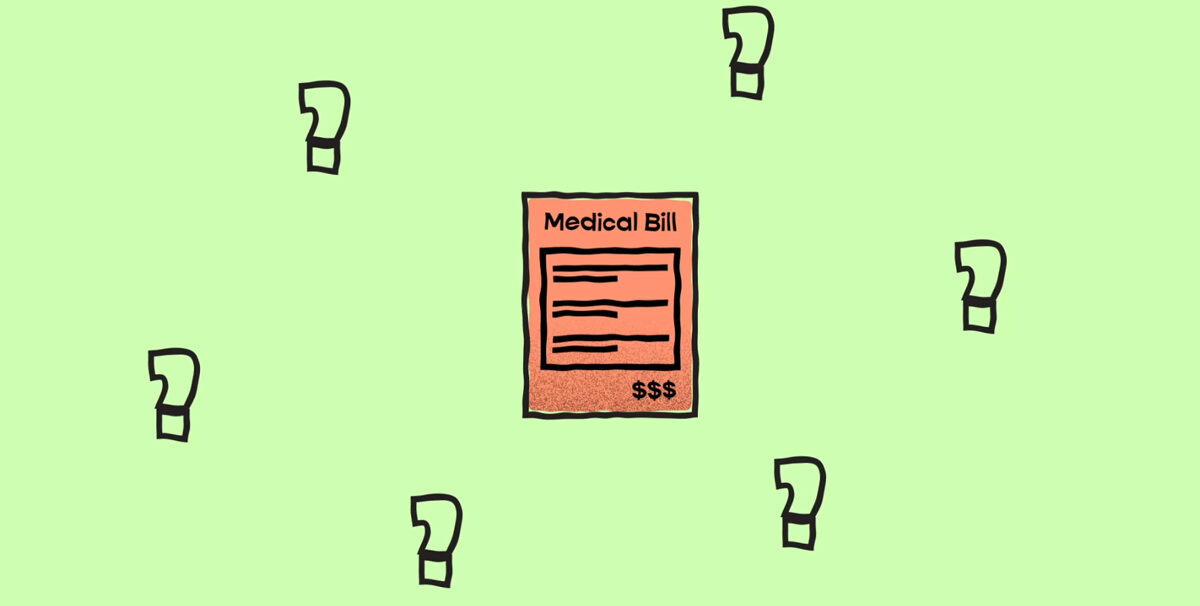Summertime is here! Now’s the time you can get outside, enjoy nice weather, and soak up some sun. But like with any good thing, too much sunshine can be harmful to your body. That’s because the sun’s ultraviolet (UV) rays contain radiation that can lead to serious health issues, including cancer.
July is UV Safety Awareness Month, making it the perfect time to learn how to protect yourself from UV exposure. According to the American Academy of Dermatology, here’s what you can do to stay safe while appreciating the outdoors:
- Schedule your annual preventative skin check to prevent serious progression of skin cancers.
- Conduct regular self-assessments of any changes in skin, freckles, or moles.
- Wear a hat, sunglasses and cover your body against direct sunlight.
- Plan outdoor activities in the morning or late afternoon. Avoid being outside between 10 am and 4 pm.
- Use water-resistant sunscreen with a sun protection factor (SPF) of at least 30 and reapply every 80 minutes.
Take action each week:
Vision Care: UV Protection
The sun releases energy, called radiation, in various forms: in the sunlight you see, the heat you feel and the invisible ultraviolet (UV) rays that cause you to get sunburned. UV rays from the sun can also damage your eyes and hurt your vision.
Dangers of UV Rays
There are two types of UV radiation: UVA rays and UVB rays. UVB rays are more likely to cause sunburn, but UVA
rays penetrate deeper. Exposure to either can damage your eyes. Long-term exposure to UV rays can result in eye problems that may lead to vision loss from conditions like cataracts or macular degeneration. Other dangers include skin cancer (around the eyelids) and corneal sunburn. Long hours at the beach or ski slope without proper eye protection can cause corneal sunburn, which can be very painful and may cause temporary vision loss.
Exposure Risk Factors
Everyone is at risk for eye damage from UV radiation. The risk of sun-related eye problems, however, is higher for people who:
- Spend long hours in the sun
- Have had cataract surgery or have certain retina disorders
- Are on certain medications, such as tetracycline, sulfa drugs, birth control pills, diuretics and tranquilizers that increase the eye’s sensitivity to light.
Proper Eye Protection
Adequately protecting your eyes from the sun, and other elements like wind or water, is crucial to maintaining your vision and eye health.
- Use everyday eyewear that absorbs UV rays. All types of eyewear, including prescription and nonprescription glasses, contact lenses and lens implants, should absorb UVA and UVB rays. For UV protection in everyday eyewear, there are several options like UV-blocking lens materials, coatings and photochromic lenses.
- Select the right sunglasses. Sunglasses help in two important ways: they filter light, and they protect the eyes from damaging UV rays. Look for labels that state they block 99-100% of UVA and UVB rays. They should also reduce glare, protect your entire eye area, be comfortable to wear and don’t distort color.
- Wear a brimmed hat or cap. A wide-brimmed hat or cap will block about half of UV rays, and also limit UV rays that hit the eyes from above or around glasses.
All About Sunscreen
By now the importance of adequate skin protection is widely known. Skin cancer is the most common cancer in the United States, and the number of Americans who have had skin cancer at some point in the last three decades is estimated to be higher than the number for all other cancers combined. Most cases of melanoma, the deadliest kind of skin cancer, are caused by exposure to ultraviolet (UV) light. The sun’s UV rays can damage your skin in as little as 15 minutes. While there are several steps you can take to limit your exposure to the sun, proper sunscreen selection and application is critical.
Sunscreen Labeling and Differences
All sunscreen comes labeled with a Sun Protection Factor, or SPF, which is the measure of a sunscreen’s ability to prevent ultraviolet B (UVB) light from damaging the skin. SPF 15 filters out approximately 93% of all incoming UVB rays. SPF 30 keeps out 97% and SPF 50 keeps out 98%. Some sunscreen also protects against Ultraviolet A light, as well as UVB. This kind of sunscreen is called broad-spectrum.
While you can find information online about calculating sun exposure times, keep in mind that duration equations are not always accurate and SPF numbers are not supposed to help you determine the amount of time you can remain in the sun after initial application.
Recent changes mandated by the Food and Drug Administration (FDA) have made sunscreen selection a lot easier. Under the new rules, sunscreen can only claim to reduce the risk of skin cancer and early skin aging if it is both broad-spectrum and has an SPF of 15 or higher. Sunscreen that is not broad-spectrum or has an SPF of less than 15 can only claim to prevent sunburn and must include a warning stating it cannot prevent skin cancer or early aging.
Sunscreen products also can no longer claim to be waterproof, only water-resistant, and labels must note a time limit of either 40 or 80 minutes before the sunscreen is ineffective.
Sunscreen Recommendations
While the FDA changes have cleared up confusion regarding the various types of sunscreen, how do you know what type is right for you? The answer can be found in sunscreen recommendations made by the American Academy of Dermatologists. Their suggestions include:
- Choose sunscreen with an SPF of 30 or higher.
- Choose sunscreen that is broad-spectrum.
- Choose sunscreen that is water-resistant.
- Reapply sunscreen at least every two hours, or more often if you’re sweating or jumping in and out of the water.
- Use approximately 1 ounce of sunscreen every time you apply so that you adequately cover your exposed body parts. This is roughly equivalent to a shot-glass full or a glob the size of a golf ball.
On top of these suggestions, it’s always important to keep in mind that:
- The need for sunscreen is not diminished by where you live or your skin type or color.
- UV rays can penetrate both clouds and windows.
- Sunscreen expires. Sunscreen is designed to remain at its original strength for up to three years. Many bottles come with an expiration date.
- Even if you’ve done a lot of tanning or have been sunburned in the past, it is not too late to protect your skin from further damage.
Skin Cancer
Many people describe sun-tanned skin as a “healthy glow,” but it’s not exactly the truth. There is no such thing as a healthy tan.
Sun Damage
Any type of suntan is the result of sun damage caused by exposure to ultraviolet (UV) radiation from the sun. Other types of sun damage include wrinkles, age spots, freckles, tough or leathery skin, dilated blood vessels, sunburn and skin cancer.
The sun emits two types of UV radiation: UVA (which causes aging) and UVB (which causes burning). Both UVA and UVB rays are undetectable to a person sitting in the sun—you cannot feel them on your skin. Both types of rays are damaging on cloudy days as well as sunny days. In addition, both types of radiation can cause skin cancer.
Skin Cancer
People are most susceptible to skin cancer when they are exposed to sudden, short bursts of sunlight while in places where the sun is very strong, such as locations near the equator or at very high altitudes. The following characteristics place people at an even higher risk of developing skin cancer:
- Having a large number of moles on the skin
- Being a redhead or blonde, and/or having blue eyes, fair skin and freckles
- Difficulty tanning and skin that is easily burned
- A family history of skin cancer
Preventing Sun Damage
The easiest way to prevent skin damage and lessen your chances of getting skin cancer is to avoid getting sunburn. Here are a few tips to help keep you safe in the sun:
- Stay out of the sun between 10 a.m. and 4 p.m. when it is strongest.
- Wear clothes with tightly woven fabric and a hat that shades your face, neck and ears.
- Use sunscreen that has at least 15 SPF every day, especially on your lips and the tips of your ears and nose.
- Avoid using tanning beds. Tanning beds give off radiation that is 10 to 15 times stronger than the sun.
- Protect children from sun damage. Most sun exposure occurs before age 18.
Avoiding excessive sun exposure and sunburn is the best way to protect yourself from sun damage and skin cancer. Routinely inspect your skin for any changes, and if you suspect that a spot on your skin is new, or has changed color or appearance, see a doctor.
Children’s Health: UV Protection
Most exposure to ultraviolet (UV) rays happens before age 18. This is why experts strongly recommend that children, toddlers and infants receive the same level, or higher, of UV protection as adults.
Limiting Exposure
Protect a child’s skin from the sun every day, especially during the peak hours of 10 a.m. to 4 p.m. Children less than one year of age should never be exposed to intense, direct sunlight, as they are especially sensitive to UV radiation and heat. Here are some helpful tips for UV protection:
- Try to ensure that children’s preschool or school schedules keep them indoors as much as possible during peak hours.
- Schedule sports and other outdoor activities early in the morning, late in the afternoon or in the evening. It is important not to reduce your child’s overall exercise in doing so, however.
- Don’t overlook natural shade. Look for play areas in shady spots.
- Keep children covered with clothing that provides protection from the sun. Closely woven materials, long-sleeved shirts and pants are best. Broad-brimmed hats are also recommended, but avoid caps that do not shade the ears or the back of the neck.
- Remember to protect children on cloudy days. Most damaging UV rays penetrate light cloud cover and haze.
Sunscreen
- When out in the sun for any length of time, children should use a sunscreen lotion with an SPF of 30 or more with UVA protection.
- For best results, sunscreen should be applied 15 minutes before exposure to the sun, so it is absorbed by the skin and less likely to rub or wash off. Reapply every couple hours.
- For children wearing bathing suits, make sure that sunscreen is applied up to and under the edges of the suit to protect sensitive areas like the upper thighs and chest. Pay particular attention to the tops of feet and the backs of the knees.
- Note that sunscreens become less effective over time. Check expiration dates before using old sunscreen and replace if outdated.
Sunglasses
The same UV rays that harm the skin can also cause injury to the eyes. Most brands are effective at screening or reflecting at least some UV light. Here are some tips for picking the right pair for your child:
- Look for lenses providing a minimum of 90% protection from UVA and 95% protection from UVB light.





